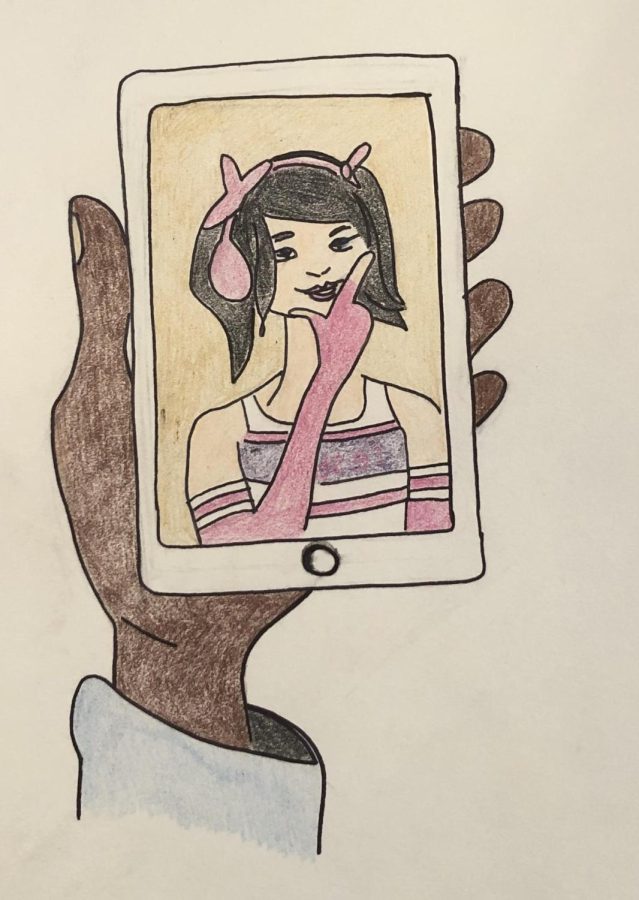TikTok: You don’t hate the app; you hate its users
January 21, 2019
There’s a diss track about former porn star-turned-sports commentator Mia Khalifa, aptly titled “Mia Khalifa,” by the music duo iLOVEFRiDAY. As of right now, it has almost 58 million views on YouTube. Is it good? No, it’s not good at all. The production is nothing special, the vocalists can’t sing and the lyrics consist of three minutes worth of pettiness and slut-shaming. It wasn’t made with good intentions and that point is very clear.
Interestingly enough, no one really blames YouTube for that. The platform has its own host of problems, but in terms of content, YouTube is exceedingly at the mercy of its users. The platform is not the reason “Mia Khalifa” has spread like wildfire, nor does it have anything to do with how people react to it. All it did was give the song a place to exist, but it’s one of two main platforms where the song thrives.
The other is on the social media app TikTok, where the song has exploded into a trend known as “Hit or Miss.” We’ll get into that in a bit.
TikTok itself is the evolution of bygone apps like Vine and Musical.ly, as its Chinese parent company ByteDance purchased Musical.ly and merged it into the TikTok app in 2017. Vine allowed users to create seven-second videos, while Musical.ly focused on users making lip-syncing skits to popular songs. On TikTok, users can watch, create and edit videos up to 15 seconds long and pair them to built-in features like filters, Snapchat-esque stickers, camera effects and an extensive music library. Some use it to film funny bits with their friends like with Vine, but others use it to lip-sync and make music videos just like with Musical.ly.
Depending on who you ask, it’s either an entertaining gathering place for younger and older generations or, well … incredibly cringey. It’s easy to see both sides. For every spontaneous clip filmed by two college kids, there’s a jarringly artificial video of someone dressed superficially and seeking nothing but attention.
From a distance, it’s just Vine and Musical.ly’s love child, but on closer inspection, it is its own brilliant piece of social media. TikTok has something its predecessors never had — interactivity on an even playing field.
While TikTok users can create their own independent videos, they can also collaborate with others. If you make your own clip interacting with another, the two videos will play side-by-side, making it look like one is reacting to the other. In TikTok terminology, it’s called a “Duet.” This has paved the way for videos that act as prompts for interplay. Users address the viewer directly, turn to the side as if they’re looking at someone and reacting to things they’re saying, reach their arms out of frame towards their potential Duet partners, etc.
The idea of real-time, video-based interaction between users where no one knows what collaborators are going to say or do is legitimately terrific, regardless of the user base. It’s effective, not only because it encourages wholesome connection and collaboration in social media, but also because it provides a breeding ground for memes.
If human connection is the backbone of social media, memes make up a considerable number of vertebrae. Twitter is the epitome of this — nothing happens on Twitter without someone making a joke about it. Social media itself is a never-ending stream of irony, and TikTok hands those ironic culture opportunities on a plate.
Those cringey or artificial-seeming TikTok videos mentioned earlier? They’re memed relentlessly within the app, whether it’s through songs, voice-overs or dance moves. One example is a clip of a girl in pristine makeup holding a PlayStation controller and looking off to the right, singing her half of a duet (not the TikTok kind) about choosing characters for the video game Overwatch.
Many users see the video as vain and contrived, and they react accordingly. Collaborators (mostly men) answer with their side of the Duet parodying the girl’s attempt to look like she’s playing the game. These videos go from small jokes like holding the controller upside down to much more surreal approaches, like one where a guy is fumbling with a pair of headphones while a computer keyboard is tucked into his hoodie in front of his face to make it look like he’s a living keyboard playing a pair of Beats by Dre.
From there, the memes only get more abstract. A prime example is a trend where users make a Duet with a cringey video, but instead of reacting or even making a joke, they just dive head-first into their stationary phone camera.
This all brings us back to “Hit or Miss.” It takes its name from the beginning of iLOVEFRiDAY member Smoke Hijabi’s verse on “Mia Khalifa.” TikTok users make their own lip-syncing skits to the verse, ranging from adults dancing in cosplay — dressing up as a character from a movie, book, TV show or video game — to kids singing alone in their rooms. Much like the song it stems from, it wasn’t exactly started with the best intentions.
That’s only half of it though. More often than not, the skits (and really just the song in general) fall into the cringeworthy category, and that’s where the ironic culture embedded within TikTok strikes again. Just about every “Hit or Miss” Duet parodies the awkwardness or artificiality of the video to which it is reacting. Some even make their own standalone videos singing and dancing to the song, usually making fun of things like Smoke Hijabi’s grating voice or the fact that the song seems to resonate with TikTok’s furry community — people dressing up in elaborate animal costumes as part of their identity.
Despite the app itself having nothing to do with “Hit or Miss” other than being a relevant platform, the trend is used as a reason to hate it. All TikTok has done is provide a place for people to make and interact with each other via videos. Sure, the creators knew what they were doing when they crafted and marketed a social media app to teens and young adults. However, that fact doesn’t invalidate the app any more than it does Twitter, Facebook or Instagram.
TikTok encourages interactivity in every way among its users, and that’s an admirable business model. Boiled down, it is simply innovative in a way we haven’t seen in social media. We have a plethora of apps that encourage written communication and collaboration, but this app has been the first to knock visual interaction out of the park. We don’t just connect on TikTok, both sides actually see each other. That’s vastly underrated in the social media sphere.
There’s a reason TikTok boasts more than double the user base Vine had at its peak. The internet begged for Vine 2, and like it or not, TikTok is that and better — or at least sharper.
It’s probably off-putting to look at TikTok any other way than superficially, but a method lies hidden behind the madness. Sometimes the chaos of the user base just makes it difficult to see that, and it does tend to vary person-to-person. Essentially, it’s hit-or-miss.
Aaron Hluch is an entertainment writer. Contact him at [email protected].


























